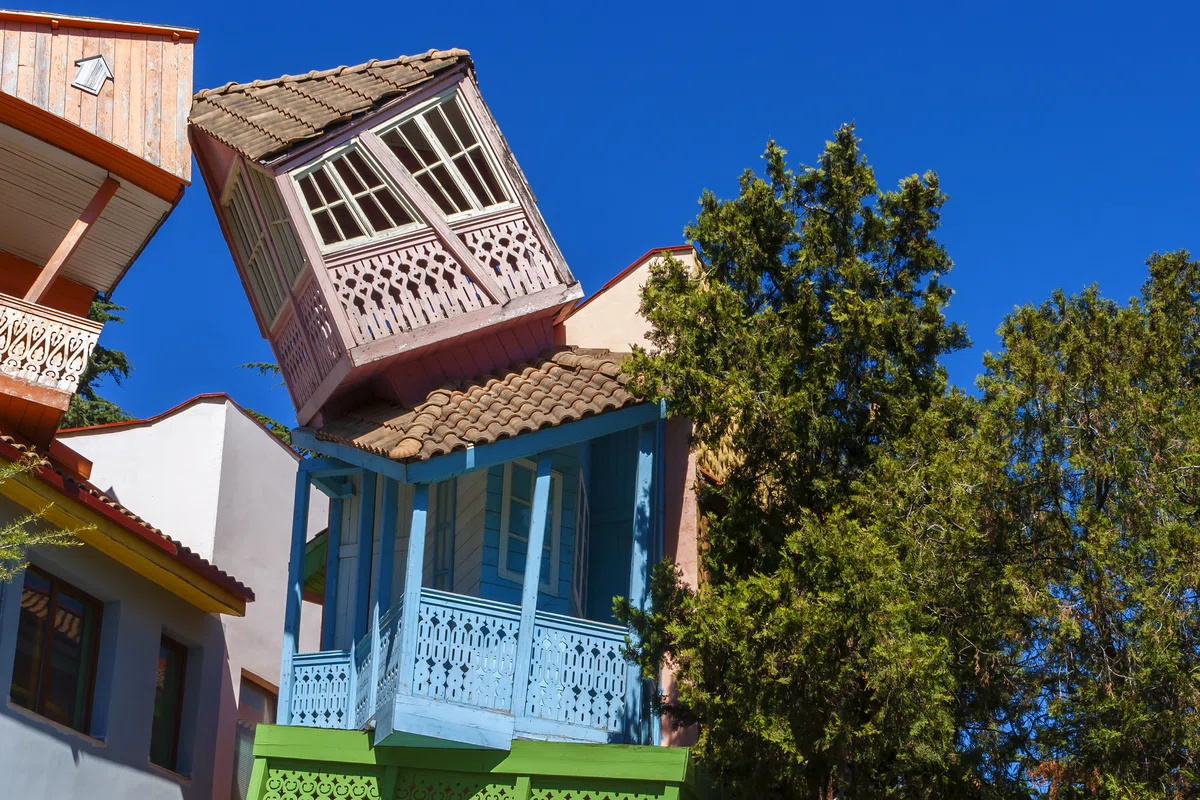
The charm of the Old City of Tbilisi is the unique Tbilisi baths and the ceremonial kaleidoscope.
The Old City of Tbilisi is located on the banks of the Kura River. The main sights of Georgia are located right here, on a small plot: the Tbilisi sulfur baths and the Narikala fortress, the Medieval Churches of Metekhi and Anchiskhati...
A walk through the Old City of Tbilisi⬇️
Historical overview
The old city of Tbilisi, otherwise called Kala, is located on the banks of the Kura River, at the foot of Mtatsminda Mountain. The medieval architectural appearance of upper and lower old Tbilisi is created by winding cobbled streets winding through the hills, ancient brick or clay two-storey houses with attached stairs leading directly to the second floor. And of course, vine-covered gazebos, in the shade of which you can hide from the midday heat.
Initially, the old fortress of Kala, created by the Persians, was considered a city, and the residential settlement that arose around the fortification itself was Tbilisi. There is also an opinion that the boundaries of the historical district coincide with the territory of Tiflis in the XII century.
The appearance of the city underwent strong changes in the XVIII century, when the settlement was looted and burned by the army of the Persian Shah. However, it took only three years for the residents to restore the city from the ashes and resurrect its former beauty, adding modern elements at that time.
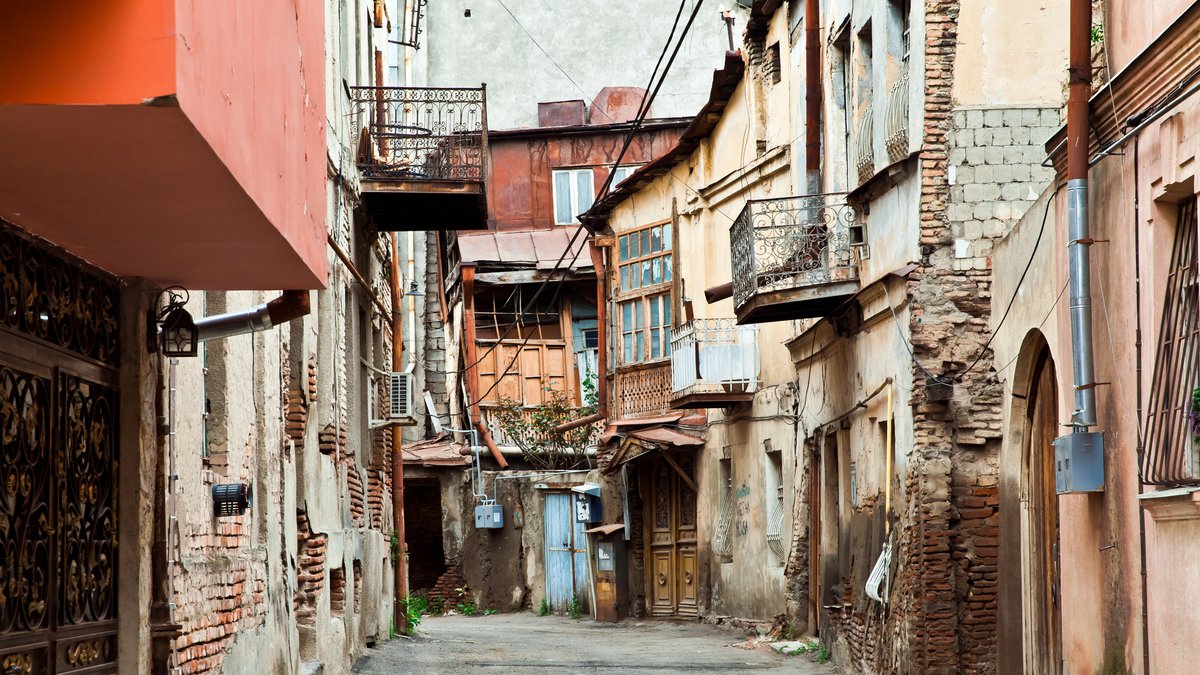
Georgia is a country of average seismic activity, periodic earthquakes brought destruction to the city. To date, the oldest civil building in Tbilisi is the Aramyants caravanserai, erected in 1818.
So, what is interesting about ancient Tbilisi? We recommend visiting Anchiskhati and Metekhi churches, Narikala Fortress and sulfur baths, Sioni Cathedral and famous houses, as well as enjoying walks through the ancient streets of medieval Georgia.
TOP most popular places of the old town⬇️
Baths
The complex of famous sulfur baths is located in the Abanotubani area of the old city. This is one of the most popular places in Tbilisi not only among tourists, but also among local residents. The baths of Tbilisi are based on sulphurous thermal springs. The buildings were built in the Persian style, over time some of them were destroyed, some were rebuilt. In ancient times, baths were famous for their rich decoration, but today they are simple rooms without any special frills.
In total, the complex includes about ten baths, differing in the level of service, comfort and, accordingly, cost. The baths enjoy the greatest honor: No. 5, Iraklievskaya, garrison, Mirzoevskaya.
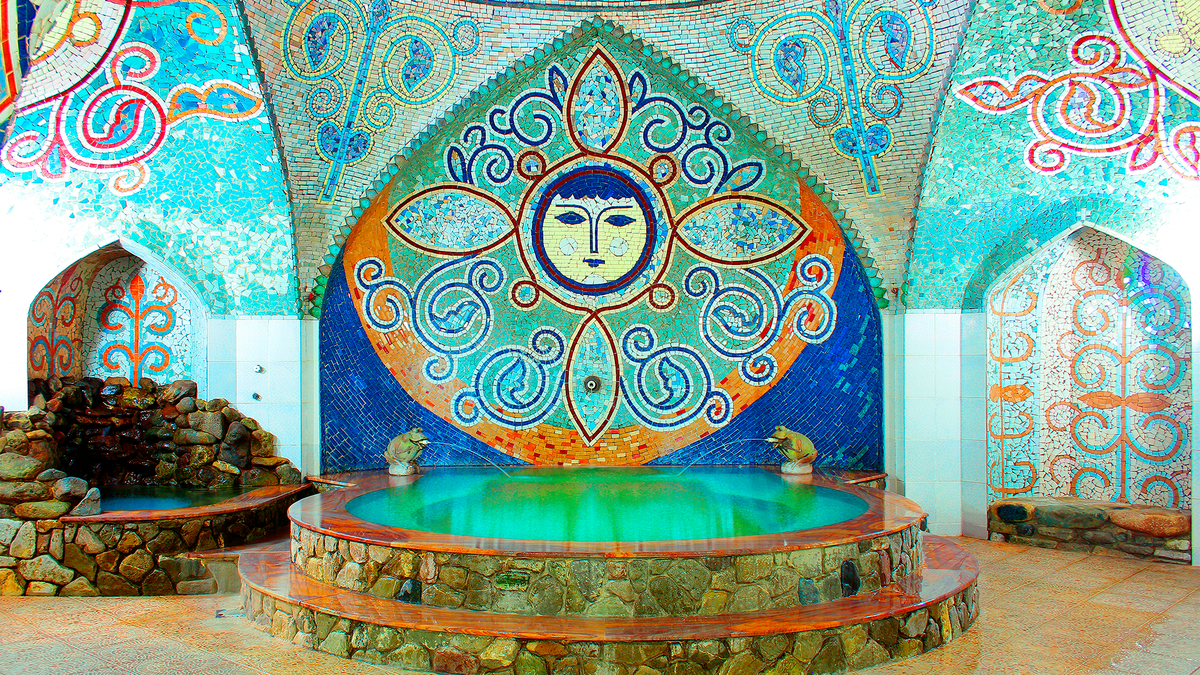
The main idea of the baths is the healing sulphurous steam, for which Georgian tourists strive to get into the complex. There are both common rooms designed for a large number of visitors, and VIP. You can rent a family room with a thermal pool and a steam room. If desired, use the services of a professional bath attendant and massage therapist. Bath accessories, including sheets and towels, are not included in the price of the visit, so if you want to save money, take everything you need with you.
It is useful for people sensitive to odors to learn about the specifics of such baths – the constant smell of sulfur.
A visit to the baths at the healing sulfur springs is recommended for the treatment of skin, neurological, respiratory diseases.
Streets of Old Tbilisi
Kote Leselidze Street (the modern name of Kote Abkhazi), running from Vakhtang Gorgasali Square (Maidan) to Freedom Square is one of the main tourist routes of the old city. This is the most attractive place in Tbilisi. Walking until midnight, excursions to architectural sights, fair trade in handmade products and local gastronomic delights, many restaurants and shops – all this can be found on the main street of old Tbilisi.
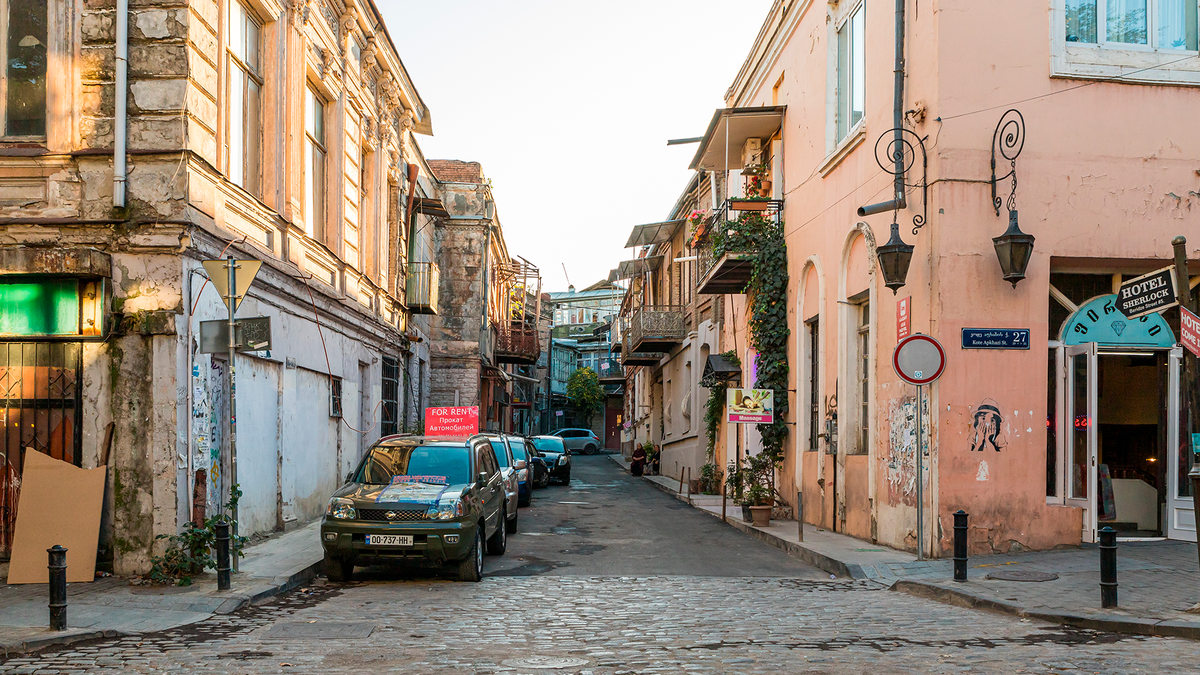
Turning off the Maidan, you can walk along Shardeni Street, named after the French traveler Jean Shardeni, who visited Tiflis in the XVII century and compiled a description of Georgia. In ancient times, the street was called "Dark", artisans' shops were located here. Today, the pedestrian street of Shardeni is completely filled with various cafes, hookah bars, restaurants with verandas and terraces and resembles Paris in architectural appearance. Live music and seductive aromas of culinary masterpieces entice tired tourists to relax after a busy day, and night bars and dance clubs are waiting for lovers of night entertainment.
On Sioni Street there is a large historical cathedral, one of the main Orthodox cathedrals of Georgia. The cathedral received this name in honor of the biblical Mount Zion, and was consecrated in honor of the Assumption of the Blessed Virgin Mary. The temple attracts the attention of tourists both as a monument of medieval architecture and by the fact that an ancient Christian relic – the cross of St. Nino - is kept in the walls of the cathedral.
The oldest street in Tbilisi – Botanic Street – is located between two architectural monuments: Narikala fortress and sulfur baths. One of the most popular sightseeing routes of ancient Tbilisi. The main attraction of the street is the botanical garden. Also, walking along this route, you can climb the Narikala fortress, explore the mosque, or turn to the spiral staircase leading to the waterfall
Narikala Fortress
Currently, the Narikala Fortress in Tbilisi is closed to visitors due to restoration work. City authorities are working to preserve this historical monument in order to restore its original appearance and ensure the safety of tourists. The exact date of completion of the work has not yet been announced, so it is recommended to check the latest information before your trip.
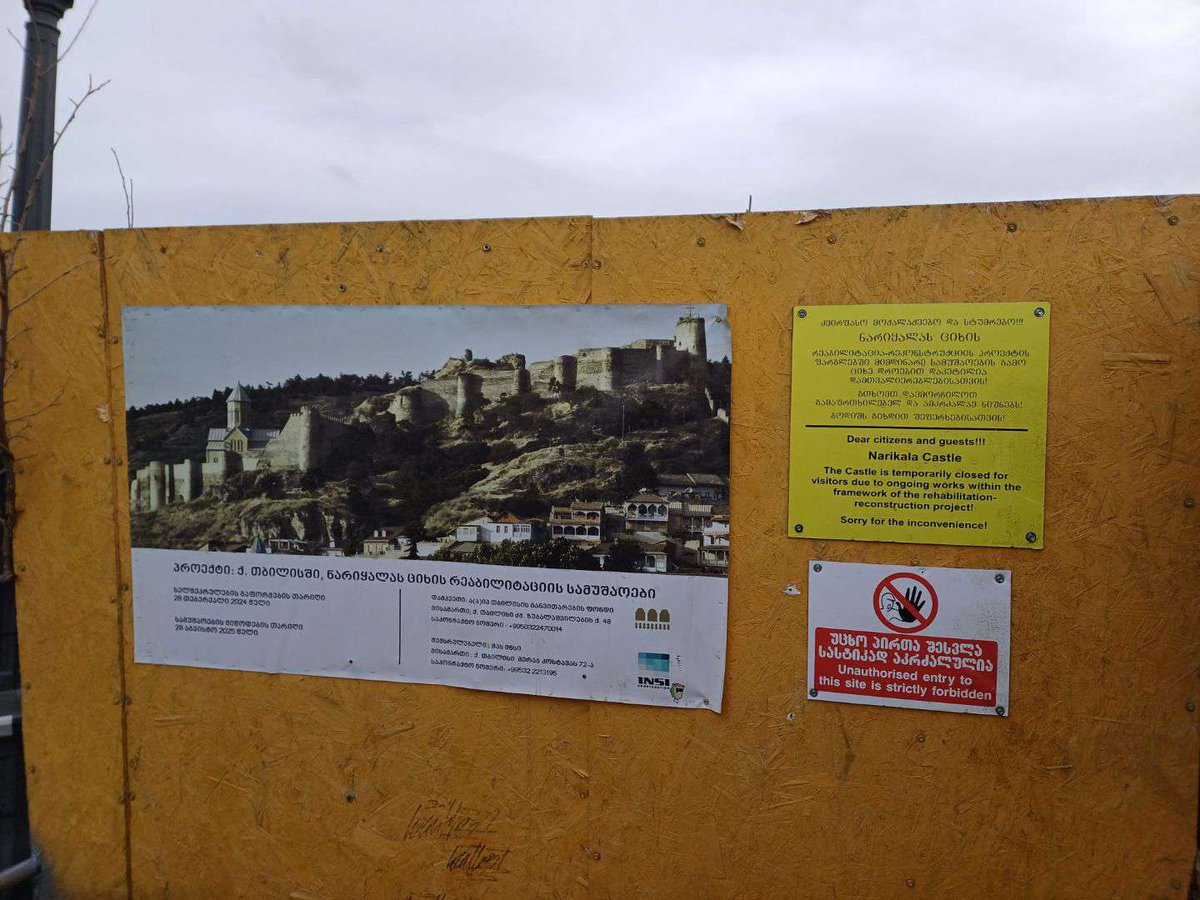
The defensive fortress of Narikala, built high on the rock of the Sololak ridge, is part of ancient Tbilisi. The fortress wall of the city adjoins it. The time of the construction of the fortress is not known for certain. Narikala is the first building visited by tourists. To this day, the central part of the fort, the main gate, from which you can get to the Upper Fortress and the Lower Fortress, have been preserved from the entire historical complex.
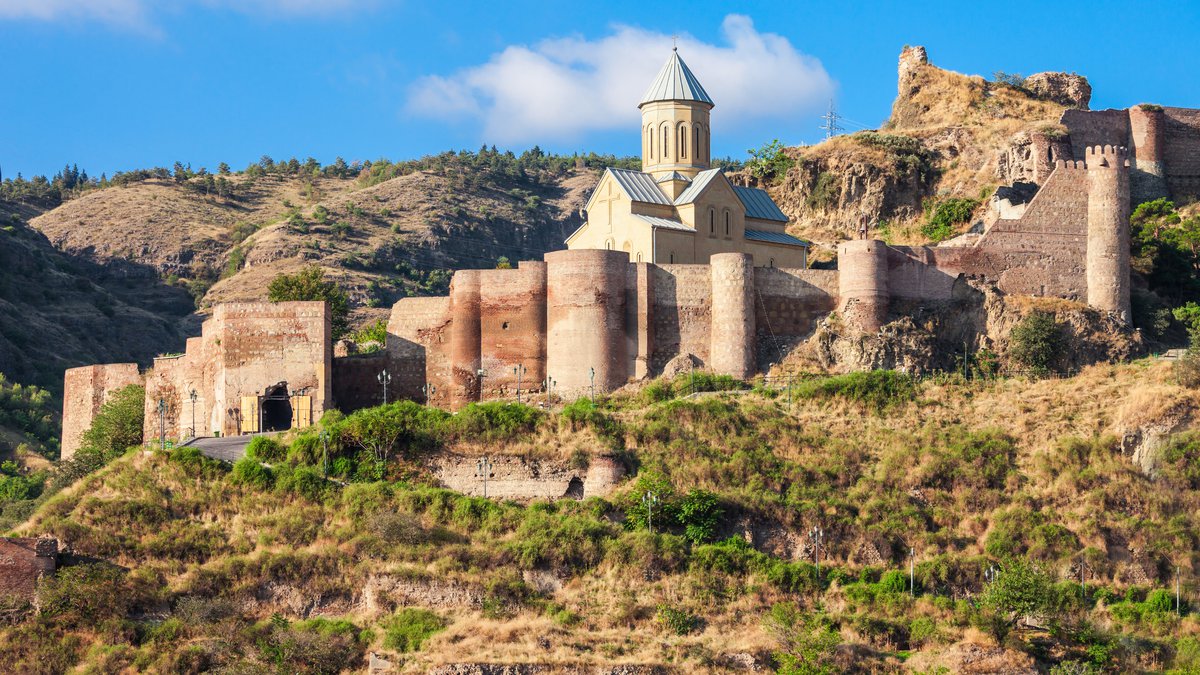
How to get to Narikala Fortress:
- Cable car. This is the most optimal way to the fortress: speed and comfort, plus the opportunity to see the sights from a height.
- Walking up Orbiriu Street. This method is longer and more energy-consuming, but an incomparable advantage will be the opportunity to plunge into the atmosphere of a medieval city.
Medieval churches of Metekhi and Anchiskhati
The Orthodox church of Metekhi, built in the XII century on the rock of the same name, is surrounded by ancient buildings of the Metekhi fortress, which served as a residence for Georgian tsars. The walls of the fortress descend down the cliff to the Kura River. Due to its location, the temple is visible from anywhere in the city. There is an observation deck on the territory of the complex, which offers a magnificent view of the Old City of Tbilisi.
Anchiskhati Church is the unofficial name of the church in the name of the Nativity of the Blessed Virgin Mary. The second name of the temple was given thanks to the shrine kept within its walls – the Anchi icon. Currently, this icon has been moved to the Tbilisi Museum of Art. It is believed that the Anchiskhati Church is the oldest basilica in Tbilisi, and the second oldest in all of Georgia: the temple was built in the XI century.
Front kaleidoscope
An ordinary residential building on 3 Betlemi Street attracts a stream of tourists with an unusual entrance. Once inside, you will find yourself in a magical kaleidoscope of colors – it's all about the stained glass windows of the front door. Don't forget to take a picture! The house was built in the XIX century, and has no historical value. Entrance to the entrance is free from 11 am to 20 pm, the front kaleidoscope of Tbilisi is one of the most amazing places of the old city.
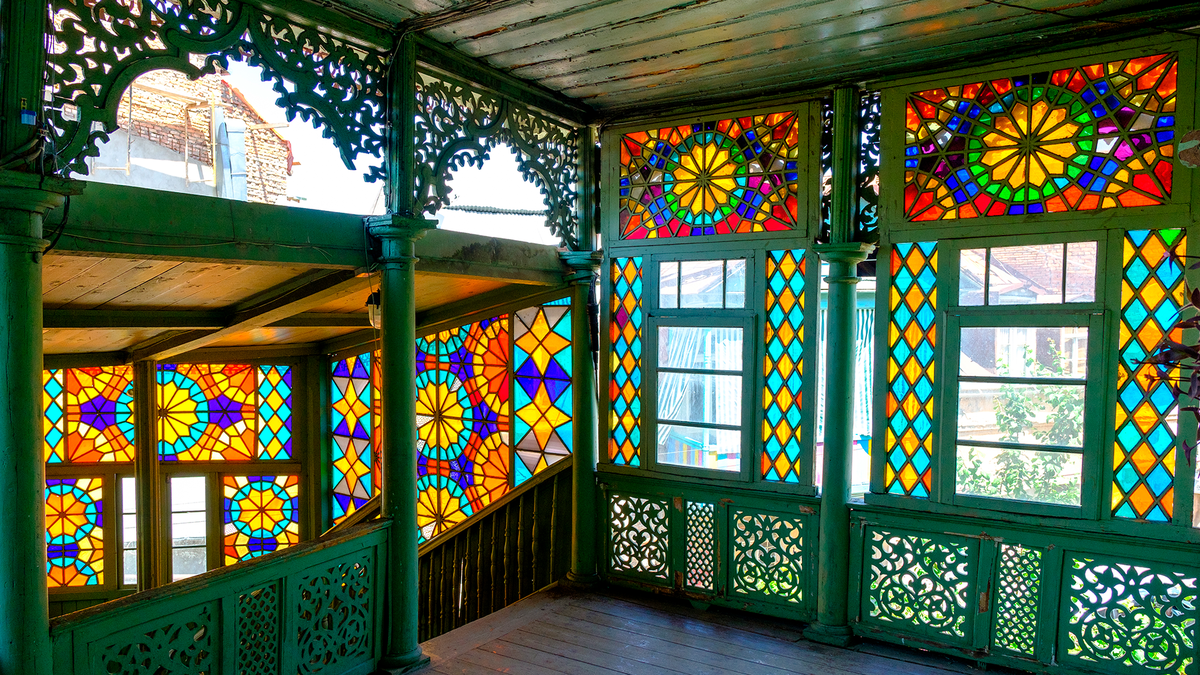
Sololaki
The quarter of Sololaki houses is located in the central part of the city between Mtatsminda Mountain and Sololaki ridge. This aristocratic district arose at the junction of the nineteenth and twentieth centuries, at one time it was reputed to be one of the richest districts of Tbilisi. The residents of the quarter were mostly wealthy Armenians who competed with each other in the construction of exquisite houses. The houses erected here in the style of Caucasian Art Nouveau are distinguished by luxurious decor. We recommend a walk through the streets of the Sololaki district. The most famous houses of the district:
- Djibladze Street/Ahospireli, 3/7;
- Dadiani Street, 18;
- Galaktioni Street, 24.
Writers' House
The picturesque house of industrialist and philanthropist David Saradzhishvili, located at 13 Ivan Machabeli Street, was built in the early XX century by the architect from Germany Karl Tsaar. The date of completion of the house is depicted on the bas-relief. The luxurious interiors of the house are combined with warmth and comfort. The house still functions today. Now concerts, exhibitions, creative evenings, charity events are held there.
How to get to the old town
The easiest way is on foot from Freedom Square. Travel time is no more than twenty minutes. But don't underestimate the distances. The difficult terrain of the city takes a lot of effort, so when going on an excursion, you need to take care of shoes that are comfortable for hiking.
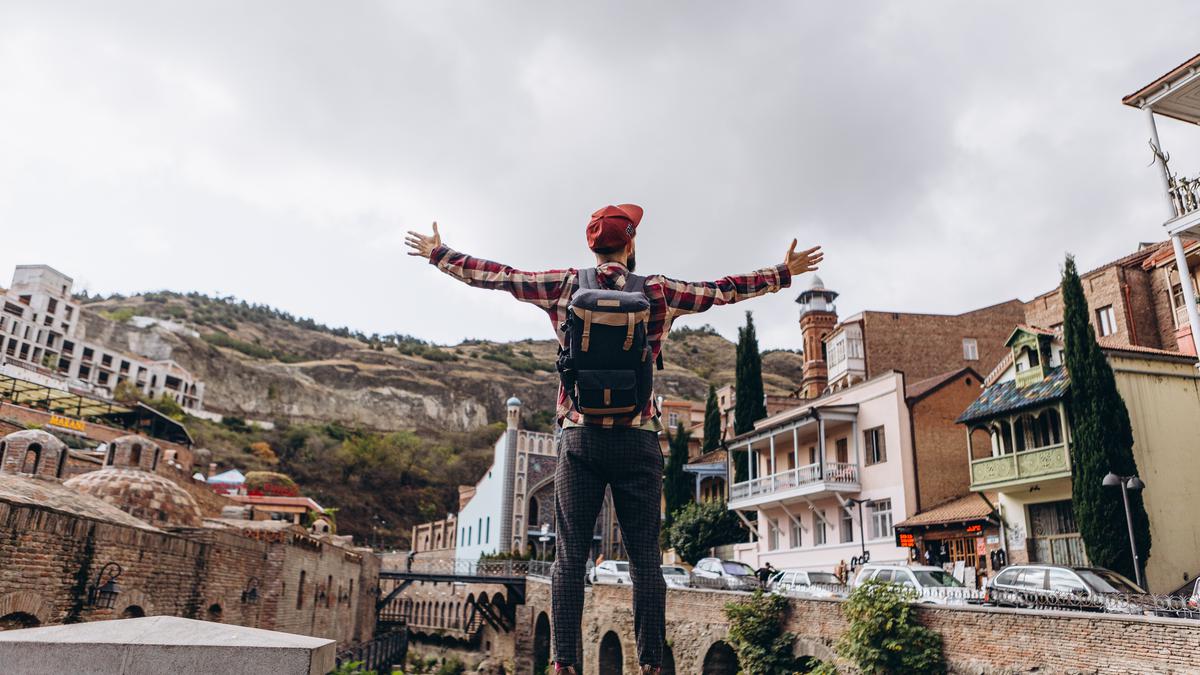












35 comments
Log in to leave a comment
Жилые дома, хоть и придают городу колорит и уникальность, но одновременно напоминают о том, как людям приходится жить в таких условиях, что всегда удручает. Однако этот момент тут же сменяется восхищением перед старинными крепостями, в которых пропитана вся история этого великого города.